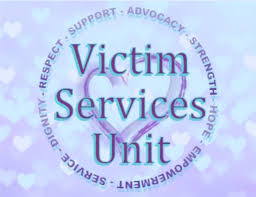Repeat victimization refers to the situation where the same person, place, or thing becomes a victim of the same type of crime more than once. For example, if someone’s house is broken into twice in one year, that is called repeat victimization.
Why Is This Important?
Police and people in neighborhoods work hard to stop crime. They do many things to stay safe, like:
- Putting lights outside
- Using alarms and cameras
- Locking doors
- Joining neighborhood watch groups
But sometimes, the people who take all these safety steps are not the ones in the most danger. The people who have already been victims once are the most likely to become victims again.
Can Police Predict Who Will Be a Victim?
It is hard for police to know for sure:
- Which store will get robbed
- Which home will get broken into
- Which student might get hurt
But they do know this: People who were victims before are more likely to be victims again. This is the best clue police have when trying to stop future crimes.

When Does Repeat Victimization Happen?
Repeat crimes often happen quickly. Many happen:
- Within one week of the first crime
- Sometimes even the next day
The risk of being hurt or robbed again is highest right after the first crime. Then the risk slowly goes down over time.

What Can Police Do About It?
Because police know that a second crime might happen soon after the first, they can act fast. If they help right away, they can:
- Stop the second crime
- Catch the criminal
- Use less time and fewer resources
- Help victims feel safer
Stopping repeat crimes saves money and keeps people and places safer.

Types of Crime Patterns
There are different kinds of crime patterns that police study:
1. Hot Spots
Places where lots of crimes happen again and again.
2. Repeat Offenders
People who commit crimes over and over.
3. Crime Series
A group of similar crimes, often done by the same person.
4. Repeat Victimization
When the same victim (a person, house, store, or car) gets hurt or robbed more than once.
What Counts as Repeat Victimization?
Repeat victimization usually means that:
- The same kind of crime happens
- To the same person or place
- Within a certain time, like 12 months
If someone’s house is broken into three times in a year, that counts as repeat victimization.

How Do We Measure It?
Police and researchers use numbers to explain how often this happens:
- What percent of victims were hurt or robbed more than once?
- What percent of all crimes happened to these repeat victims?
Let’s look at some examples:
- 46% of sexual assaults happened to people who were attacked more than once.
- 11% of assault victims suffered 25% of all assaults over 25 years.
- 40% of burglaries happened to just 19% of people who had been robbed more than once.
These numbers show us that a small number of people often suffer many crimes.

Who or What Can Be a Repeat Victim?
A victim isn’t always just a person. It can also be:
- A house
- A store
- A car
- A company (like a store chain with many locations)
Police try to use things like names and addresses to track who or what is being hurt more than once.
How Common Is Repeat Victimization?
Repeat victimization happens a lot all over the world. We know this from:
- Victim surveys (asking people about crimes)
- Talking to criminals
- Police reports
Even though the numbers are a little different in each place, all of these sources say the same thing: repeat victimization is real and important.
Why Does It Happen?
Some reasons why a person or place is at high risk:
- Poor lighting or bad locks
- Living in unsafe areas
- Being alone often
- Using drugs or alcohol
- Being near people who commit crimes
These things make it easier for a criminal to come back and hurt or rob someone again.
How Can Police Use This Information?
Police can look at their reports and data to find out:
- Which homes, stores, or people are most at risk
- Where crimes are happening again and again
- How soon after the first crime is a second crime likely to happen
Then they can act quickly to protect these people or places.
What Can Be Done to Stop It?
Some actions police can take include:
- Visiting the victim right after the first crime
- Advising to keep them safe
- Checking on them again soon after
- Watching the area more closely
When police do these things, they can stop crimes from happening again.

Tips for Police and Communities
1. Act Fast
The sooner police respond, the better chance they have to stop repeat crimes.
2. Focus on the Right People
Use data to find victims most likely to be hurt again.
3. Work Together
Police, community leaders, and families can work as a team to help victims and stop crimes.
4. Use Good Records
Keep track of addresses, names, and crime types to find patterns.
Repeat victimization is a big problem. But it is also one that police can do something about. When they look at past crimes, they can often see what might happen next. And when they help victims right away, they can stop future crimes.






